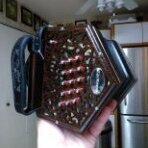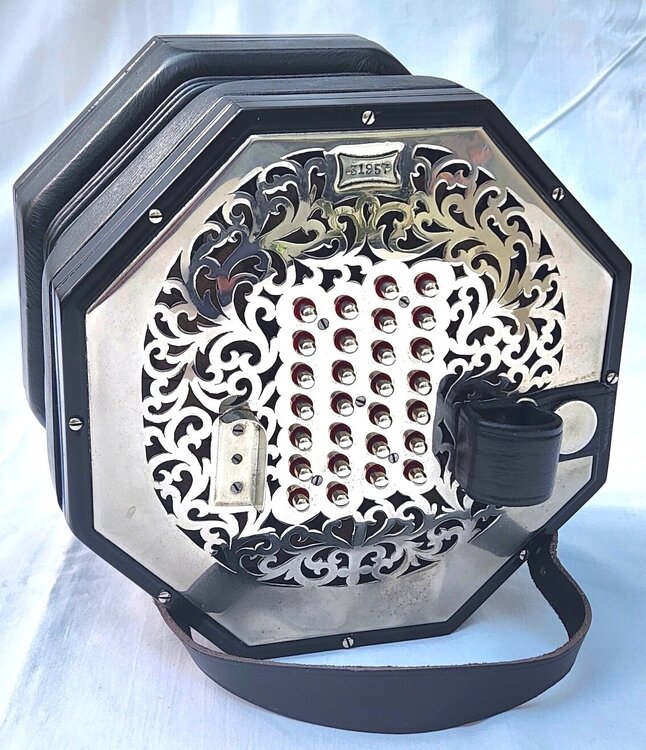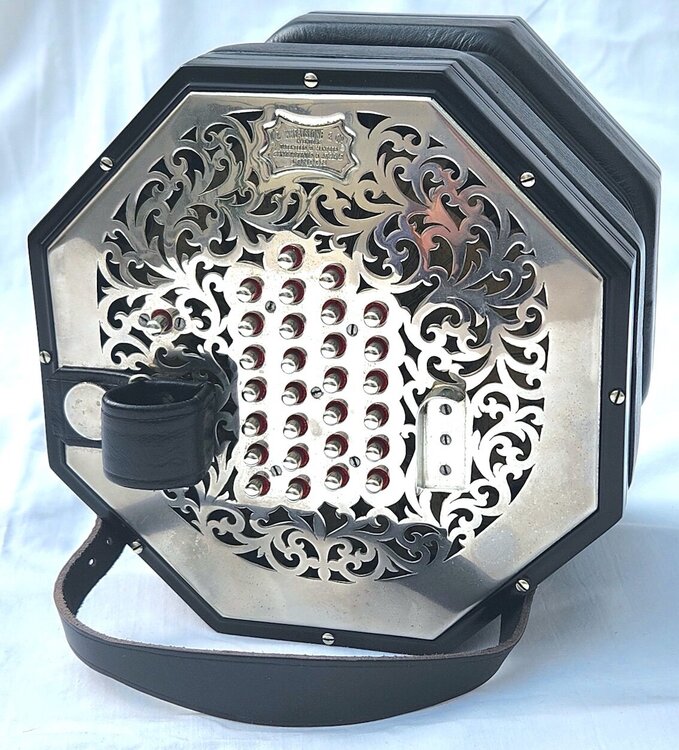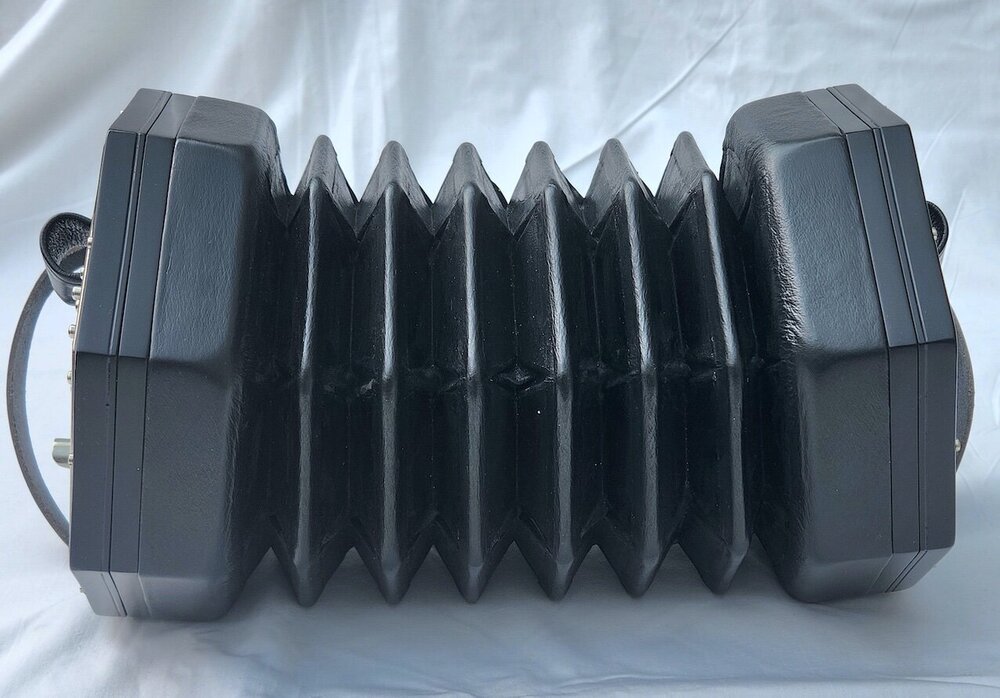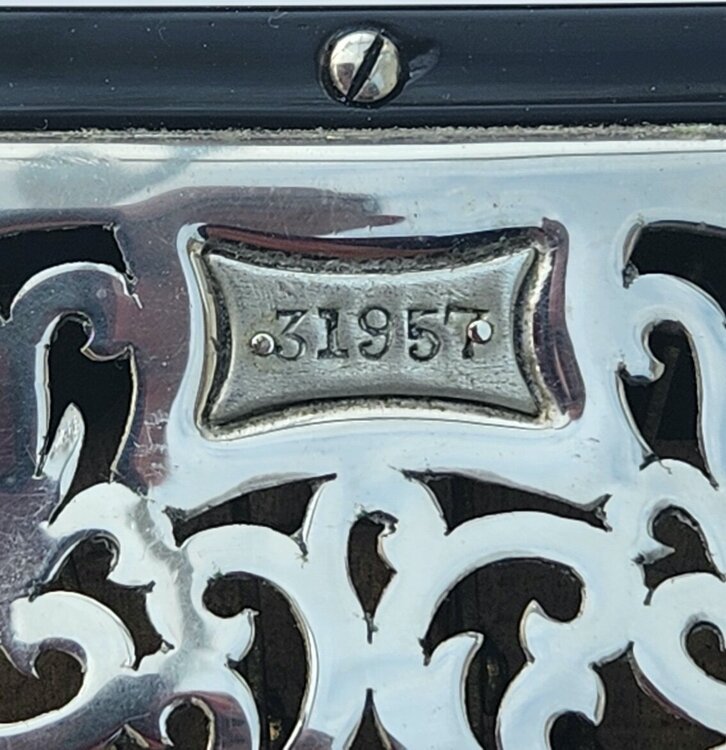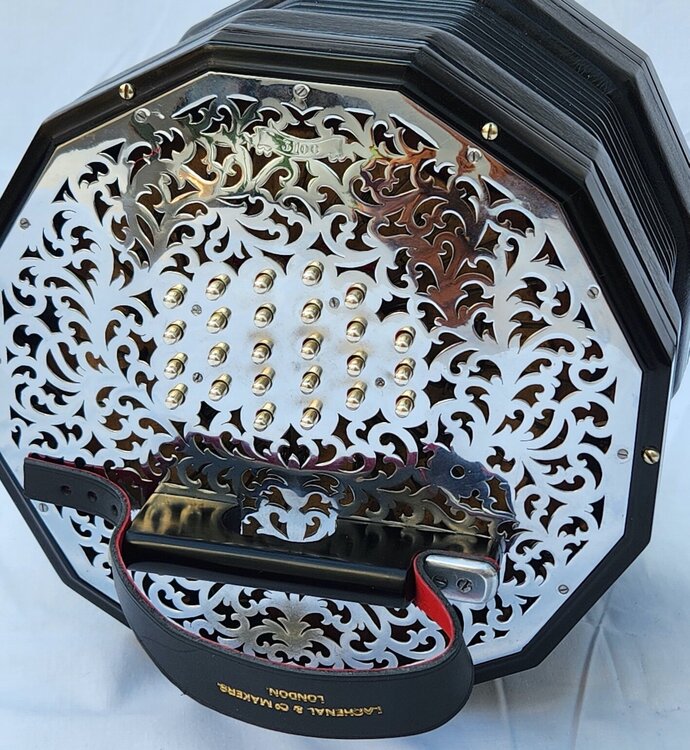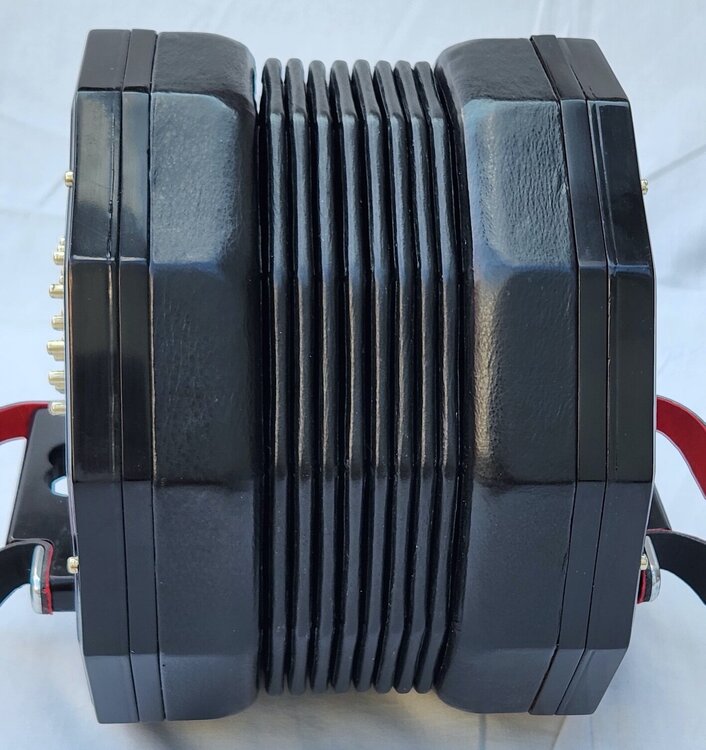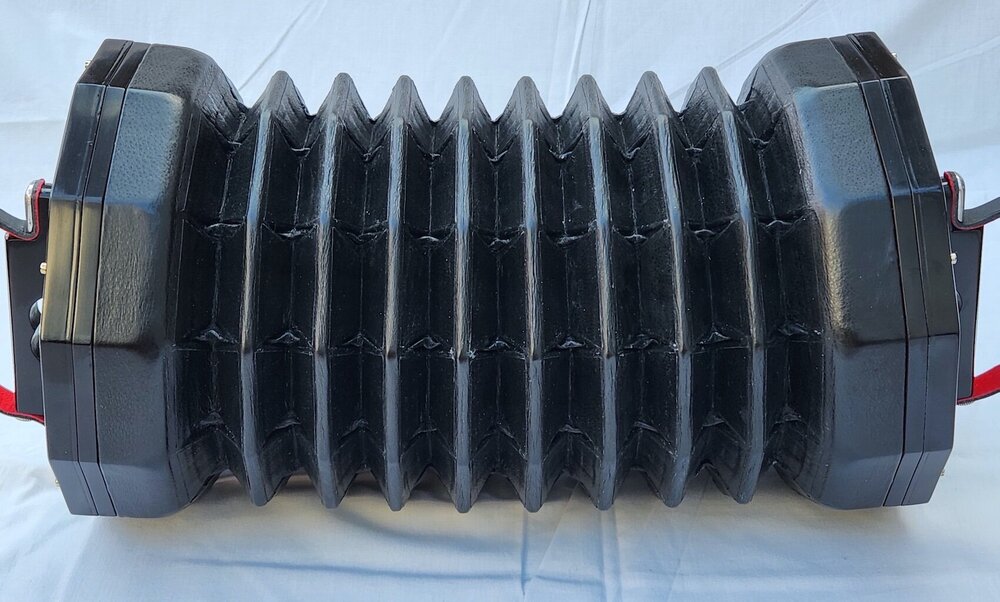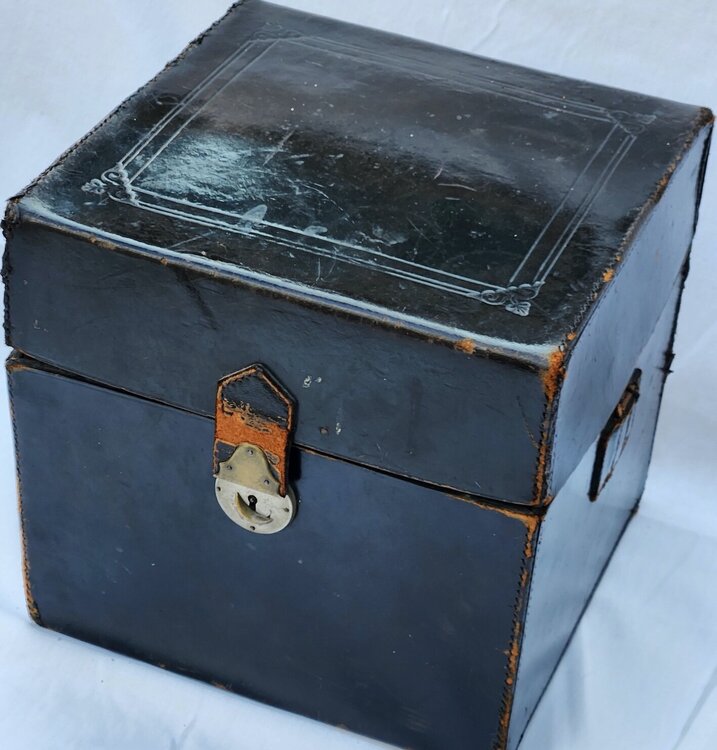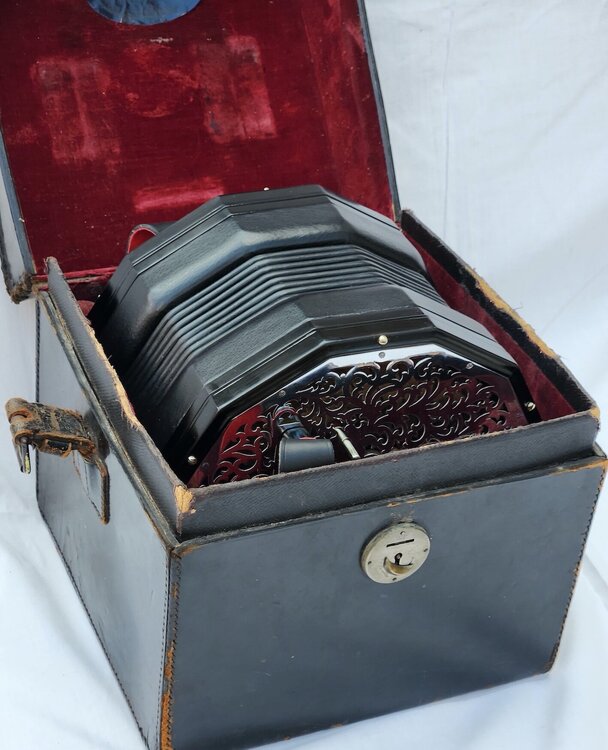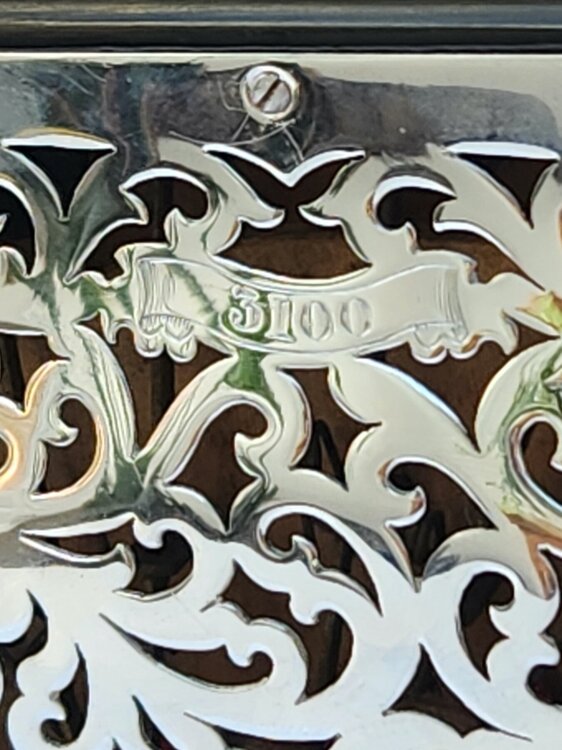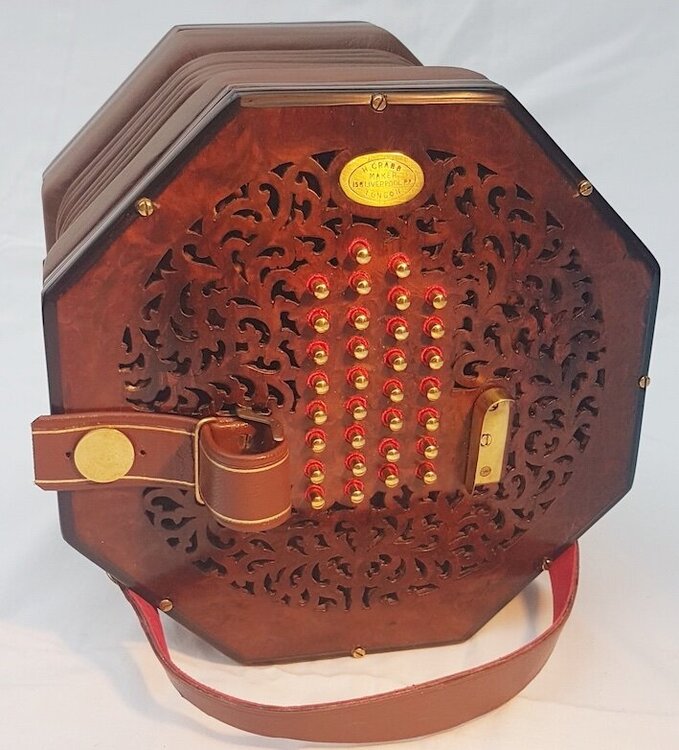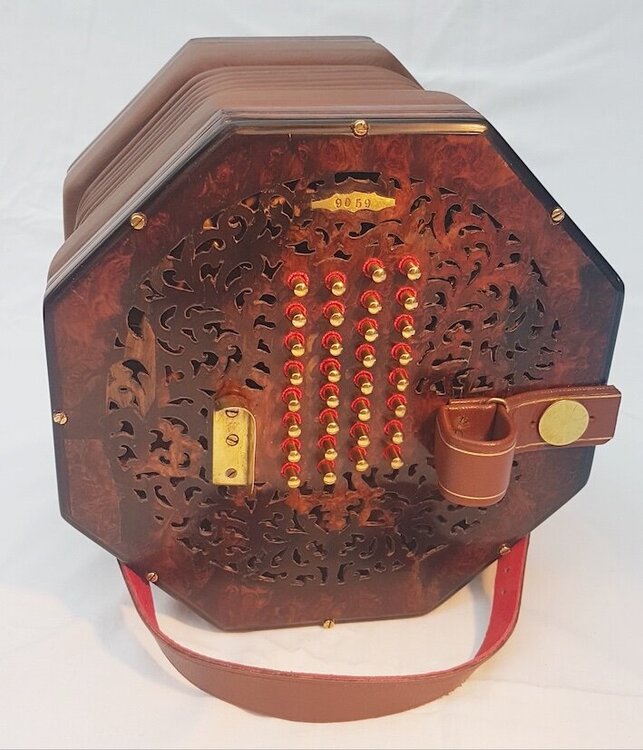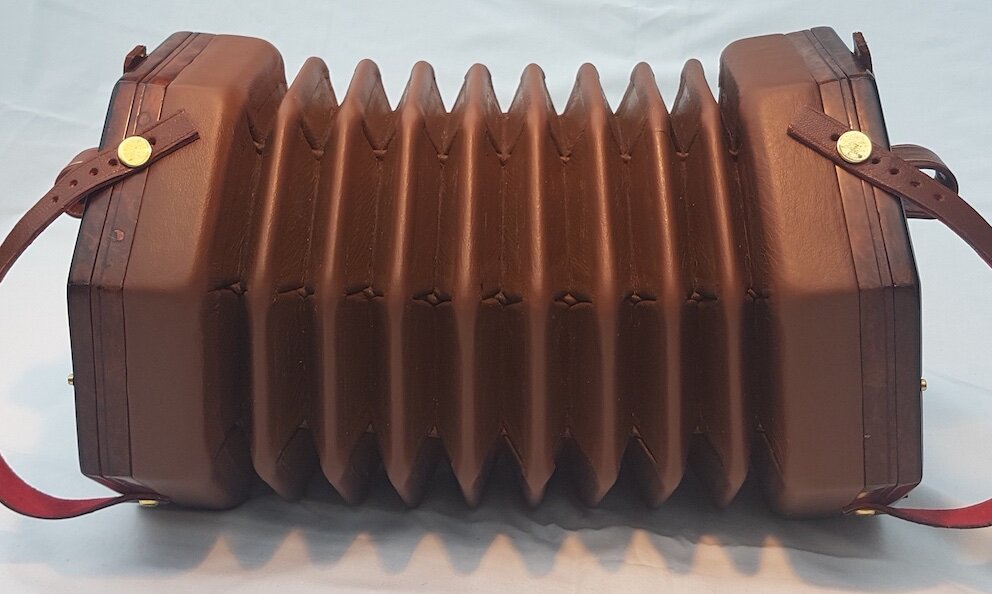
david robertson
Members-
Posts
528 -
Joined
-
Last visited
About david robertson
- Birthday 06/08/1948
Contact Methods
-
Website URL
http://www.concertina-restoration.co.uk
Profile Information
-
Gender
Male
-
Interests
Full-time restorer and tuner of concertinas, part-time abuser of a 38k Jeffries Anglo. I also arrange for and sing with a 3-part harmony group called Poacher.
-
Location
Norwich, England
david robertson's Achievements

Heavyweight Boxer (5/6)
-
56-key Wheatstone Aeola tenor-treble
david robertson replied to david robertson's topic in Buy & Sell
This instrument has now been sold and a donation sent to concertina.net -
A gorgeous metal-ended tenor/treble which I restored for its owner around 2 years ago, at which time it was fitted with new pads, valves, bushes, thumb-straps and wrist-straps. The bellows were given a cosmetic re-bind, and it was tuned to modern concert pitch. In the interim, the owner has decided that he hasn't got the time to improve his performance on both the concertina and the fiddle, and incomprehensibly, he has chosen the latter. Still, it's an ill wind... he offered it to me, and I snapped it up. The serial number is 31957. Now, I have heard it claimed, by someone who knows far more about Aeolas than I do (and, incidentally, has a spectacular collection of them) that Wheatstone invested in new tooling at around the 31XXX mark, and consequently, instruments in the 31000 series are among the best of the best. I can't confirm the history, but I can confirm that this one is a superb player - fast, loud and well-balanced throughout its range. One slight curiosity is that where you would normally find a low D# on the left hand, this one goes right down to Bb. It's not a common arrangement, though I have seen it before... and I love it! Price: £3350
-
Made in 1931, this is a rare example of an 8-sided Crabb, made even rarer by the amboyna veneers, gold-plated buttons and fittings, and tan leather bellows and straps. It offers a range of four and a half octaves, which includes the bottom end from a tenor-treble, and the top end from an extended treble, and it is every bit as fast and responsive as you would expect of a top-quality vintage Crabb, It has been the subject of a comprehensive restoration, with new pads, valves, bushes and springs. New wrist and thumb-straps have been fitted, the bellows have had a cosmetic re-bind, and the woodwork has been refinished in French polish. Finally, it has, of course, been tuned to Modern Concert Pitch (A=440Hz). On the minus side, the left-hand end has had some slightly agricultural repairs to the fretwork, but it is sound and solid, and I thought it better to leave honest repairs visible than to try to disguise them. (And these imperfections are reflected in the price.) It plays beautifully, and it could well be many years before you see another one like it offered for sale. As always, if you're within striking distance of Norwich, do feel free to come and have a squeeze. And if not, get in touch anyway, and we'll work something out. Price: NOW ONLY £2950
-
Here's something you don't see every day - brand new, beautifully made 8-fold bellows on an Edeophone! I bought this one from Roger Rocha of this parish about a year ago, in untouched original condition, and in pretty good order, apart from the airtight but rather shabby bellows. I thought it deserved better, so I invested the time and effort in new ones. Of course, it has had all the standard stuff done too... new pads, valves, bushes and straps, woodwork French polished and metalwork buffed up. The reeds have also been tuned to Modern Concert Pitch. (If you can see patches of orange on the ends, it's not worn plating, but simply reflections from the orange shirt I was wearing when I took the pics!) If you're looking for a big MacCann, you could be looking for quite a while before you find a better one. The asking price is £2450, and as ever, if you're within striking distance of Norwich, you're very welcome to come and have a squeeze. If you're not, get in touch anyway... I'm sure we can sort something out.
-
The 64-key Aeola has now been sold via my website, but the lovely and very original 'tropicalised' treble remains. And in view of the time it has remained, I'm offering it at a 'final reduction' price of £3000. A fine player borrowed it for a few hours, and in his words, "couldn't fault it". Sadly, his bank manager was less enthusiastic, so this is your opportunity to acquire a great Aeola at a great price. As always, if you're within reach of Norwich, come and have a squeeze. If not, call me on 07840 838899 and we'll work something out.
-
I'm afraid I can't speak for the Crabb company... but I know a man who can!
-
Curiously, I also have a similar 64-key TT Aeola on the shelf, so I have had the opportunity to compare them side by side. Both are very fast, responsive and balanced across the range. At the top end, the Crabb, to my ear at least, is actually better. But overall, it is hard to tell them apart; the Aeola is perhaps very marginally louder, the Crabb a millitad sweeter in tone. But these matters are, of course, highly subjective...
-
Made in 1931, this is a rare example of an 8-sided Crabb, made even rarer by the amboyna veneers, gold-plated buttons and fittings, and tan leather bellows and straps. It offers a range of four and a half octaves, which includes the bottom end from a tenor-treble, and the top end from an extended treble, and it is every bit as fast and responsive as you would expect of a top-quality vintage Crabb, It has been the subject of a comprehensive restoration, with new pads, valves, bushes and springs. New wrist and thumb-straps have been fitted, the bellows have had a cosmetic re-bind, and the woodwork has been refinished in French polish. Finally, it has, of course, been tuned to Modern Concert Pitch (A=440Hz). On the minus side, the left-hand end has had some slightly agricultural repairs to the fretwork, but it is sound and solid, and I thought it better to leave honest repairs visible than to try to disguise them. (And these imperfections are reflected in the price.) It plays beautifully, and it could well be many years before you see another one like it offered for sale. As always, if you're within striking distance of Norwich, do feel free to come and have a squeeze. And if not, get in touch anyway, and we'll work something out. Price: £3250
-
Quality 48-key treble by unknown maker
david robertson replied to david robertson's topic in Buy & Sell
This instrument is now sold, and a donation sent to c.net. -
Quality 48-key treble by unknown maker
david robertson replied to david robertson's topic in Buy & Sell
Thanks for the suggestion, Wes. The action on this one is quite different, though. Each pivot post is a round column of brass, with a central slot cut down from the top, in which sits the flattened section of the lever, with the rivet passing right through the column and lever. I've seen this system before, but I can't be sure who the maker was. Jabez Austin springs to mind, but as I say, there are some mornings these days when I swear I can feel the memory cells turning up their toes... -
Scates, Austin, Nickolds, Ebblewhite? Your guess is as good as mine - but in a way, it matters not a jot, because the quality is obvious everywhere, inside and out. The ends are of beautifully figured solid rosewood, with very fine inlays and unusual corner bindings of German silver. The action levers are riveted through slotted pillars (another mark of quality), and the riveted reeds are well made and close-fitting (apart from the two later additions which I have replaced). The original bellows were fit only for the bin, so I have made and fitted new 6-fold green ones, with foil-stamped '3 daisy' design papers - similar to the originals, but with a bit more bling! I have also fitted matching green leather thumb-straps, and re-covered the slides in the same leather. All pads, valves and bushes have been replaced, the woodwork has been French polished, and the reeds have been tuned to Modern Concert Pitch. It is fast and responsive, with a sweet, mellow tone - an ideal singer's instrument, I would suggest. If there's anything else I can tell you, please ask. And if you're within striking distance of Norwich, do drop in for a squeeze. Price: £1250
-
Cheffin's, Cambridge Auction: Jeffries?
david robertson replied to lea nicholson's topic in Buy & Sell
In spite of the auctioneers' supposition, it seems improbable that the bellows have been replaced by Jeffries (or, indeed, at all!) If, as Mike suggests, it's smaller than a Lachenal and looks like a Jeffries, isn't Mr Crabb the prime suspect? -
Stephen, you're right as usual - it's a marriage. The action boxes, end covers and bellows are all stamped with the serial number 1274 The reedpans have the same number, but only in handwritten form, and they are clearly not original. From the positioning of the support blocks in the bellows, it is obvious that the original reedpans were of the tapered design, with deeper chambers for the lower notes. The replacement flat pans have been adapted by gluing on little blocks of wood, of varying thickness, which correspond to the support blocks. I wondered at first why whoever fitted them didn't simply build up or move the support blocks, but I suppose it would have been easier to adjust the thickness of the blocks glued to the reedpans, rather than furtling around inside the ends of the bellows.
-
Many thanks to everyone for your suggestions. I'll post a few more pics when I've got a few minutes to spare.
-
Replacing valves? Read this first!
david robertson replied to david robertson's topic in Instrument Construction & Repair
Love to oblige, Theo, but I'm creatively drained. I may have to lie in a darkened room for a day or two...

